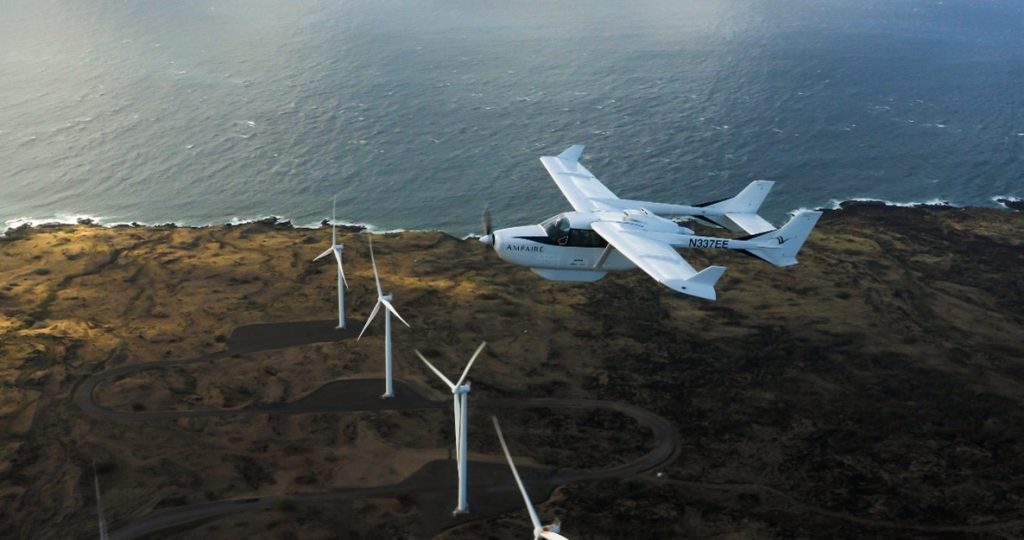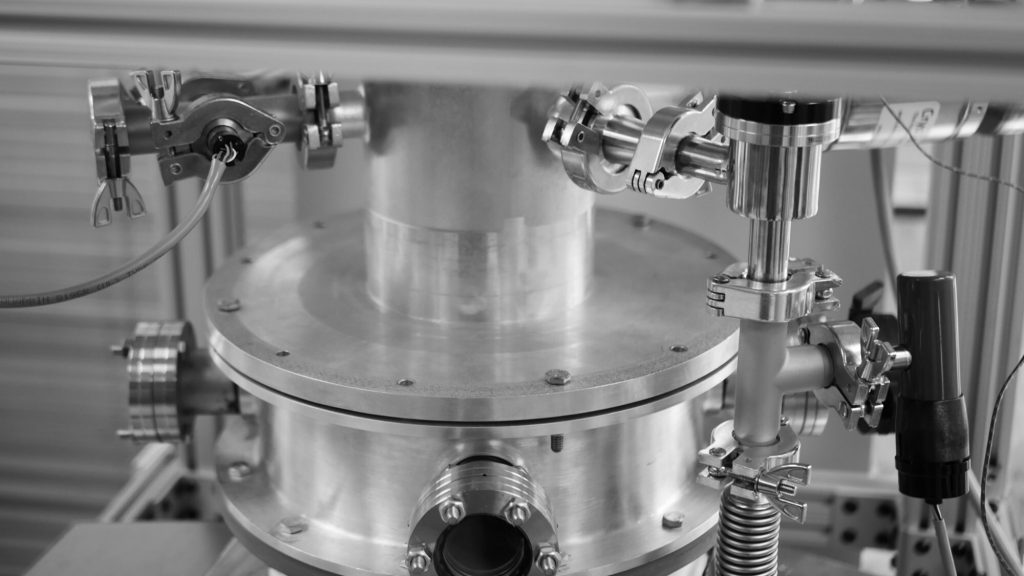Howdy 👋
Jigar Shah has now joined the Biden/Harris administration as the head of the DOE loans program! If you’re reading this tweet at him or congratulate him on LinkedIn! Big career move that provides him power to help support new critical energy projects we need.
From the cleantech industry perspective it’ll be awesome to monitor what Jigar can do in that position of influence. As a cleantech investor or entrepreneur – if you’ve ever met Jigar – you know that if you come up with a way to advance this industry forward Jigar will help you.
Hopefully for all of you reading right now, this week’s insights will provide potential inspiration.
– Swarnav S Pujari
In Your Inbox: An interview with Ampaire, which got acquired; Flowaste’s pre-seed round led by Plug & Play Ventures; An interview with Revterra who makes a high performance flywheel energy storage system

FloWaste recently announced the close of their $270K Pre-Seed round. The round was led by Plug and Play Ventures, and other investors include: Elevate Ventures, RSLP Ventures, Flywheel Fund, Culvex Investments, and individual investor Angie Stocklin. Flowaste is providing data and analytics for cafeterias and restaurants to reduce food waste costs.
Project Drawdown has reducing food waste as the third largest solution to decrease greenhouse gas emissions. It is promising to see FloWaste secure funding and deploy their technology. Pilot customers include well-known global fast food chains, corporate cafeteria management companies, a large European beef processor, and the U.S. Air Force. FloWaste can give granular level insights, providing up to a 2% reduction in procurement costs and a 35% reduction in disposal costs.
Between organizations making net zero commitments and as work from home restrictions lift, it will be interesting to see how technologies, like FloWaste, are adopted into cafeterias.
Sign up for The Impact and learn the perspectives behind the latest sustainability trends

As investments in the broader climate sector heat up, and the EV sector gains momentum, electric aviation is also flying high.
Ampaire, an Elemental Excelerator portfolio company with $7M+ from NASA and backed by Techstars, is has been innovating in the space. The aviation industry is responsible for nearly 3% of global emissions, and Ampaire can directly reduce the emissions of planes by up to 50% in their hybrids.
They also were also recently acquired by Surf Air Mobility.
Ampaire is a leader in fixed wing electric aviation, focusing initially on regional aircraft where it sees near-term opportunities for electrification of entire airline fleets. Others in this segment are designing clean sheet aircraft, an expensive and lengthy process, plus one that is complicated by the rapid evolution of battery technology and electric propulsion systems. Still others are developing all-electric drives as retrofits for small regional aircraft.
Ampaire takes a different approach. It is focused initially on the retrofit market and is developing hybrid-electric solutions as a bridge to fully electric aircraft. Ampaire’s approach has at least four main benefits: the retrofit strategy entails substantially lower technological risks and costs; time to market is far faster (just a few years); the company is able to incorporate new technologies more easily in its development roadmap; and the market is ready to embrace a step change that lowers operating cost and requires less infrastructure initially to recharge and service all-electric aircraft.
To date, Ampaire has successfully flown two hybrid electric testbed aircraft—upgrades of the Cessna 337, including routine flights on a Mokulele Airlines route (with observers), and flights of more than two and a half hours, including a cross country from the Los Angeles area to the San Francisco bay. The company is evaluating hybrid electric upgrades of the Cessna Caravan and the Viking (né De Havilland) Twin Otter, the latter with NASA support.
The first benefit is reduced emissions, something important to everyone on the planet. These upgraded aircraft will be quieter, making them good neighbors at urban and suburban airports, and more pleasant for passengers. Additionally, a hybrid-electric upgrade reduces hourly operating cost. With a lower cost structure, regional airlines will find opportunities to expand routes and serve previously unprofitable destinations. Improved air service will benefit many communities.
We’re at the very earliest stage of an electric revolution. Norway, as one example, intends for all domestic routes to be flown by electric aircraft by 2040—an entirely achievable goal. We expect this approach will be embraced by many other countries. And, in any case, airlines will look to electric aviation for a cost advantage and as a matter of corporate responsibility. Today we are focused on 9- to 19-seat aircraft certifiable under FAA Part 23 regulations for aircraft under 12,500 pounds. These technologies are scalable, and we expect to eventually move to larger aircraft under the more complex Part 25 rules for transport aircraft.
Electric aviation presents an opportunity to reduce carbon emissions and noise pollution, as well as bringing back business to smaller regional airports. The piece of the puzzle we can’t forget about is the infrastructure and energy resources for the planes.

Ben Jawdat, CEO, and Founder at Revterra, took time this week to tell us about he is taking a new spin to flywheel energy storage.
Here are the key takeaways of our conversation:
Born out of an attempt to create a contactless wheel, Jawdat designed and patented his concept for a passively stable magnetic bearing with improved load bearing capabilities. After working as a post-doc with the Air Force, Jawdat ultimately revisited his design when the patent was granted.
With multiple applications of the technology, flywheels proved the most to gain from the advantages of Jawdat’s novel technology. With energy storage being at the forefront of the next generation of green technology, coupled with a lack of innovation in the flywheel vertical, the application and market timing matched up perfectly.
“Revterra is developing a clean, kinetic energy storage solution for long-duration energy storage for energy arbitrage and peak shaving.” By substituting a unique superconducting magnetic bearing into a traditional flywheel apparatus, Revterra can deploy this robust, long-lifespan method of storing energy to new markets and applications.
With the increased penetration of renewables into the grid, energy storage will be vital to their success. However, every energy storage solution is plagued with its own challenges. Lithium-ion batteries are declining in cost; however, they have a short useful life, use toxic materials that can pose environmental and recycling challenges, and they produce non-trivial amounts of CO2 in their production.
Flywheels solve many of these issues, as they are non-toxic, have long useful lives, high roundtrip efficiency, and little to no environmental impact. However, they have a high capital cost and lose energy due to friction or power-hungry active magnetic bearings.
Revterra seeks to alleviate these pain points using superconducting bearings to decrease energy losses in the flywheel rotor system and increase load-bearing capacity, leading to the possibility of building larger (and cheaper) flywheel energy storage systems. This means that the system can spin for longer, increasing the potential applications of the flywheel. Additionally, because the superconductor is very well insulated, there is minimal electrical input necessary to keep the system spinning once it is cold.
With energy storage seen as the next major step in the green revolution, capital and interest have been pouring into startups. With advancements in lithium-ion batteries, hydrogen power, molten salts, and now flywheels, there is no shortage of technologies being explored. At the same time, superconductor economics has become more favorable as nuclear fusion power has been driving demand for superconducting tape. With these two combined, the market timing for Revterra could not be more favorable.
Ancillary technologies, such as the cryocooler, are becoming more efficient, trustworthy, and
cheaper. Cryogen-free cryocoolers do not use hydrogen or helium to maintain a compound’s
superconducting state. This well-tested technology provides a cost-effective solution to obtaining and maintaining superconductivity, allowing for Revterra’s systems to operate effectively.
The future of energy will need to see continuous technological improvements and discoveries.
While renewable energy costs have dropped drastically over the last two decades, these systems only fill the urgent need. With society’s energy demand increasing, we will need to get more creative in how we generate electricity. To meet this demand, we will need more energy-dense sources as to not cover a substantial amount of land in solar panels and wind turbines.
But to bridge that gap, we need to solve the missing piece right now: energy storage.
Contrarian Climate is a podcast focused on exploring “contrarian ideas” and new perspectives from people focused on helping address climate change.
Jeff Booth is a serial technology entrepreneur and currently working at the intersection of climate and crypto. With a focus to help ensure life is comfortable for his kids and family he wrote the book: The Price of Tomorrow to explain why he believes we need to fix our financial system first to solve the world’s biggest social issues, including climate change.
This interview is highly insightful and dives deep into why our financial system is holding back the benefits clean technologies like solar bring us.
Jeff Booth’s Book: https://amzn.to/3tA4VuJ
Jeff Booth’s Twitter: https://twitter.com/JeffBooth
Check out and subscribe to our Youtube Channel for future episodes!
Writers: Swarnav S Pujari, Daniel Kriozere, Matt Morris
If you aren’t absolutely thrilled with The Impact, reply and let us know why. Or you can unsubscribe from all updates by clicking here.
Copyright © The Impact 2021. All Rights Reserved || 19 Morris Ave, Bldg 128, Brooklyn NY 11205
Develop your market map of up-and-coming climate startups and market opportunities by subscribing to our weekly newsletter for free.